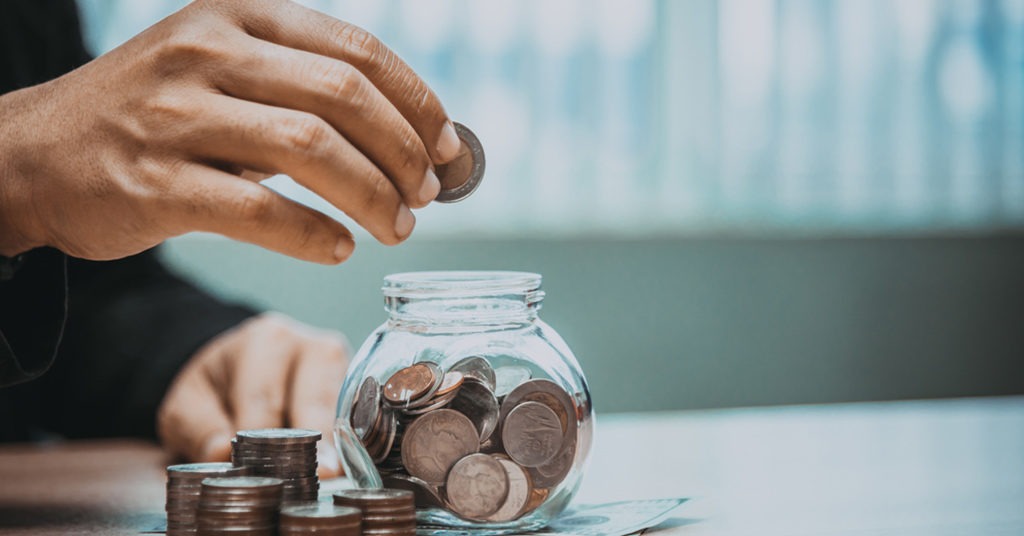Here are the best low-risk investment types to withstand any economic storms

Source: depositphotos.com
As the world is facing inflation levels not seen in decades, investors struggle to maintain the purchasing power of their savings. Traditional savings accounts don’t offer a safety net despite governmental interest rate hikes. Moreover, even high-yield offerings barely match the pace of unabating inflation.
Feeling cornered, many investors turn to risky ventures that offer generous returns. However, higher returns are not necessarily a synonym for higher risks.
Here are the best low-risk investment types to withstand any economic storms.
1. Government Notes, Bills and Bonds
Government-issued securities are backed by the reliability and credit of the country’s main administration. They may have lower yields than you might earn from corporate bonds, but surpass average savings accounts.
Interest rates on the U.S. Treasury bonds are slightly better than those offered by high-yield savings accounts (3,2% vs 2,3%). UK Government bonds now offer 3,9% – 4,8% interest rates, depending on the yield term. Meanwhile, German bonds can bring you about 2,3% – 2,5% profit, while the highest interest rate on savings accounts in this country is 0.75%.
2. Corporate Bonds
High-grade corporate debt from top established companies may be riskier than government bonds, but it also offers higher yields. According to the latest data from St. Louis Federal Reserve, 10-year high-quality bonds offer average interest rates of 5.27%.
However, corporate bonds are not the best investing option when interest rates go up or the issuer goes bankrupt.
In the first case, the interest rate locked for a long term may be lower than the one introduced via the hike. Therefore, if you need to sell your bonds, you may sell them at a disadvantageous price.
The chances of the issuer going broke are smaller if the debt is issued by highly-rated companies. They are typically the most likely to stay afloat and pay you back.
3. Money Market Mutual Funds
Money market mutual funds are fixed-income funds that invest in debt securities with short maturities and very low credit risk (e.g. overnight commercial paper).
Although they typically offer pretty low yields (currently a 1,2%-2,2%), money market mutual funds still beat the average savings account APY. Besides, these investment options offer investors absolute liquidity and experience virtually no volatility.
Brokerage firms regularly use money market mutual funds to provide cash management services. However, many banks also offer similar services. Minimum initial investments generally range from $500 to $5,000.
4. Fixed Annuities
Fixed annuity is a contract between an investor and an insurance company that pays a guaranteed interest rate. They remind us of certificates of deposit (CDs) as you don’t have access to your money for a set term, getting a higher than average interest rate in exchange.
Investors can purchase fixed annuities during the accumulation phase at once or in smaller installments.
Multi-year guaranteed annuities, or MYGAs, guarantee a fixed interest rate for a specified time period — usually three to 10 years. Currently, the best MYGA rate is
- 4.80% for a 10-year surrender period,
- 4.99% for seven years,
- 4.90% for a five-year period,
- 4.20% for three years, and
- 3.80% for a two-year surrender period.
The drawbacks of fixed annuity as an investment are: penalties for early access to the deposit and the risk of default from less established insurers.
5. Preferred Stocks
Preferred stockholders are VIPs in yield distribution. Not only do they have a higher claim to dividends or asset distribution than common stockholders, but also they can benefit from the buyback.
Unlike company’s bonds, a preferred stock payment is not completely guaranteed. However, they cost companies more than corporate debt and there’s a chance to sell such stock back for a greater price. In the case of liquidation, the preferred stockholders’ claim on assets is greater than common stockholders but less than bondholders.
Typically, preferred stocks offer annual returns of between 5% and 7%.

Source: shutterstock.com
6. Selected Common Stocks
As common stocks also pay significant dividends, investing in a company with a strong, solid brand name is also quite safe. We have previously explained how to pick solid stocks.
Value shares that belong to mature, well-known companies are often considered risk-free and suit conservative investors. In addition, real estate investment trusts (REITs) and utility stocks are historically safer, less volatile, and more reliable in their dividend payments.
Although common stock dividend payments aren’t guaranteed, average dividends for REITs are around 2,6%-3%. From 2015 to 2020, the average dividend yield of the Dow Jones US Select REIT Index was 3.7%, compared to a mere 2% average yield of the S&P 500, as reported by S&P Global.
7. Index Funds
Index funds can be either mutual or exchange-traded. They allow investors to invest in a diversified portfolio of individual stocks and bonds. Therefore, the investment risk significantly decreases. At the same time, index funds offer elevated interest or dividend rates.
Over time the index changes, as companies are added and removed. Thus, an individual company’s bankruptcy or poor performance doesn’t affect the index’s worth. Like all stocks, indexes fluctuate. However, over time they make solid returns.
Some examples of diversified, higher-rate funds include PIMCO’s BOND fund or Vanguard’s BND or VDADX (Dividend Appreciation) funds.
8. Short-Term Certificates of Deposit (CDs)
A certificate of deposit (CD) technically is a savings account that holds a fixed amount of money for a fixed period of time. They are FDIC-backed, so you shouldn’t be afraid of money loss.
Since interest rates have been on the rise in 2022 and more increases are expected, it may make sense to own short-term CDs and reinvest as rates move up. The best CD rates currently are around 3,5%-3,75% (Bankrate).
The drawback of such accounts is a penalty that is incurred when you take the money out early. However, there are also no-penalty CDs, so you may take time to shop around the bank offerings, depending on your needs.
9. Money Market Accounts
A money market account reminds one of an ordinary savings account. Besides, it offers similar benefits, including a debit card and interest payments. However, a money market account may require a higher minimum deposit.
At the same time, most money market accounts pay a higher interest rate than regular savings accounts and often include check-writing and debit card privileges.
Compared to high-yield or high-interest checking accounts, money market accounts may have lower rates but fewer restrictions. The average money market interest rate is currently 0.23% APY for accounts with balances under $100,000, according to FDIC. Typically, the higher your balance, the higher your interest rate.
Overall, Money Market Accounts are better suited for short-term goals rather than long-term financial planning.
10. High-yield savings accounts
High-yield savings accounts work similarly to regular savings accounts but have higher interest rates. They are rather flexible, allowing you to withdraw money up to six times per month. At the same time, since your money isn’t locked up in a contract, high-yield savings accounts are known to be one of the safest investments.
According to NerdWallet, the best high-yield online savings accounts offer 2,25%-3,11% APY. The top rate you can currently earn from a nationally available savings account is 3.50% APY from FitnessBank. The combination of two accounts in this bank (Fitness Checking + Fitness Savings) earns 3,6% APY. However, well-established banks with a long history of customer trust may offer lower high-yield rates. The average APY for such accounts in the US is 2,3%.
SEE ALSO:








